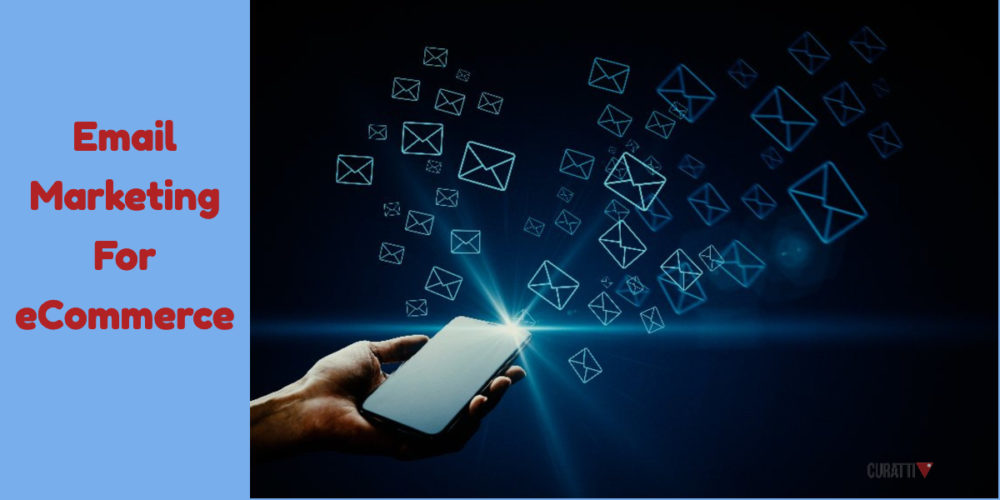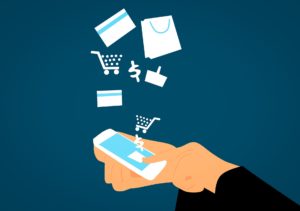eCommerce Email Marketing: The Key to Long-Lasting Relationships with Customers

For many businesses, building a long-lasting relationship with customers is key to establishing a fan base and a stable stream of revenue. There are many ways to establish this, but the most effective way is through email marketing. It might sound crazy, but email marketing can be strategized in a vast number of ways to hit your audience and build relationships.
The Importance of eCommerce Email Marketing Businesses
The key reason email marketing for eCommerce businesses is essential is the visibility it has for your audience. Like social media, email marketing has the potential to be right in front of your audience by periodically appearing in their email box. And if your audience has notifications set, your email will appear as a banner on their phone’s home screen or lock screen.
Additionally, email marketing is the perfect channel to keep your customers up to date. Businesses can use this marketing strategy to push restocks, promotional sales, and limited offerings. By pushing these emails out, your customer base will be more inclined to continue visiting your eCommerce business because you will stay top of mind. It’s not just important to have a great customer experience on your website — you need to improve their experience of interacting with brands at different stages, like email marketing.
How Can eCommerce Email Marketing Build Long-Lasting Relationships with Customers?
Building a long-lasting relationship with customers is easier than you think. How? By implementing specific steps, your eCommerce business can nurture its audience. Offering relevant information, being honest, and setting expectations up front are great starts to establishing trust for your customers.
Set Expectations from the Start
It’s one thing to blindly send emails to your customers, but it’s important to earn their trust. Your customer gave you their valuable information, and it’s vital to prove to them that it’s worth their time. By setting expectations with the first welcome email, you give customers a look into what they signed up for. To do this, you can use the first email to explain what types of emails they will receive, offers that might be associated with the subscription, and potentially the frequency of emails sent. By including these topics, your customers will know what to expect right from the start.
Provide High-Quality and Valuable Content
This might seem like a given, but it is something businesses need to remember. Providing high-quality and valuable content to your audience builds not only trust but the long-lasting relationship you hope to achieve. This high-quality content can range from newly stocked items to important shipping information.
Take off the Sales Cap from Time to Time
For many eCommerce businesses, it can be hard to take a step back from driving a sale. For email marketing, it’s crucial to take off your sales cap from time to time by providing information that can benefit your audience. This can be done by offering advice, sharing customer stories, or even describing initiatives that your business is undertaking to help the community. It can be a great way to break up the sales clutter that might have taken over their inbox.
Keep It Brief and Consistent
No one wants a long, drawn-out marketing email. Keep your emails brief to maintain your customers’ attention. It can seem hard to accomplish when there are so many things happening, so think of what your audience will actually want to know. You can even get your message across with graphics, like sales graphics or action shots of your product.
Consistency is another step toward this. Think of this like it’s your brand guideline. Keep your emails consistent in terms of length, design, brand, and timing. You want your customers to know generally the time or even day that they will receive your email, and you want them to identify your brand within the first glance of your email. By keeping consistent with your email marketing campaign, you can gain a following among your audience and generate a long-lasting relationship with them.
Automate When You Can, But Not Every Time
Automation is great for marketers, but it can be a detriment to your marketing campaign. By automating all your emails, you lose the personal touch that drives building a loyal audience. However, there is a time and place to push automation. For example, purchase emails, cart abandonment, and shipping details are great to automate. Setting up these automations will build brand loyalty and increase a customer’s buying experience by keeping them informed while they wait for their order.
An Unsubscribe Will Happen — Make It Easy
It can be hard to admit this, but some people will unsubscribe. Some customers might want to declutter their inbox, or they simply don’t want to receive your emails anymore. Whatever the reason is, it’s vital to make the ability to unsubscribe from your marketing emails easy. Make the button as visible as possible at the bottom of your email. Don’t hide it. By hiding it, you are diminishing the trust that the customer once had. Putting it out in the open and easily accessible gives the customer a sense of freedom and could convince them to continue to shop your brand.
5 Types of Emails eCommerce Companies Should Consider
As you navigate the steps of building and nurturing your relationship with your customers, it can be hard to figure out where to start. We’ve touched on a few emails that will strengthen your customer loyalty, but there are so many options to choose from. To make it easier, here are five email marketing strategies that eCommerce companies should consider.
Welcome Email
Welcome emails are a must for any eCommerce business. This email will establish the first impression and give a glimpse of what the consumer signed up for. It’s the make-or-break moment for your strategy. By including high-quality content and incentives to subscribe, your business gives your customers a reason to continue receiving your email marketing efforts.
Informative Newsletters
eCommerce businesses can implement informative newsletters to add a breath of fresh air to promotion-based emails. And for many B2B marketers, newsletters are their most used form of content marketing. These newsletters can include advice, customers’ stories/testimonials, or community involvement. More importantly, this can be a time to answer any questions that customers have about your products. Some consumers may be unaware of your product’s full potential. Including informative newsletters in your email marketing strategy gives your business a personality and allows customers to see another layer of your business.
Order Information
The emails that probably get the most visibility are your order received and shipping information emails. To build trust and increase customer loyalty, businesses need to be transparent. Being clear about the order received and shipping emails gives a customer a sense of loyalty and can turn them into returning customers.
However, it’s also important to include shipping delay emails. Supply chain disruptions will happen, and it’s vital for a business to start the communication early to set the tone. Being upfront and honest within your shipping delay email can increase trust and add foundation to a great business-to-consumer relationship.
Promotional Emails
When you hear about marketing emails, this is what you imagine. Promotional emails will drive customers to purchase products from your site. These emails mixed within your email marketing campaign can help promote seasonal sales, referral programs, or push slow-moving products. If the promotions are consistent and high-quality, you have a better opportunity to increase repeat customers. The increase of return buyers can help generate a loyal group of consumers.
Cart Abandonment Emails
Cart abandonment emails are a great email marketing strategy to remind consumers of what they are missing or what they’ve forgotten. However, the key to working with this type of email marketing strategy is timing. Most businesses that elect this automation send cart abandonment emails anywhere from three to five hours after the customer leaves the site. Then, there’s the follow-up email that could come anywhere from three to five days after the initial site visit. And for some companies, the final cart abandonment email is a promotional email that contains a discount code to further entice the consumer to complete their purchase.
Build Relationships Through Your Email Marketing Campaigns
Email marketing is a great way to build your audience, and it can be the key to sustaining a long-lasting relationship with your customers. As 308 billion emails are sent and received each day, it’s important for eCommerce businesses to stand out. By providing clear, high-quality content, your customers will feel more engaged with your brand and turn into repeat buyers.
Sign Up For Our Mailing List
If you’d like to receive more in-depth articles, videos, and Infographics in your inbox, please sign up below.

Sign up for the newest articles from Curatti, delivered straight to your inbox
Featured image: Copyright: ‘https://www.123rf.com/profile_peshkov‘ / 123RF Stock Photo
Latest posts by Jake Rheude (see all)
- Things You Should Know About The Behavior Of Digitally Conscious Customers - January 10, 2023
- eCommerce Email Marketing: The Key to Long-Lasting Relationships with Customers - August 30, 2022
- Personalization and 5 Other Ways to Master Your Social Selling - April 12, 2022



